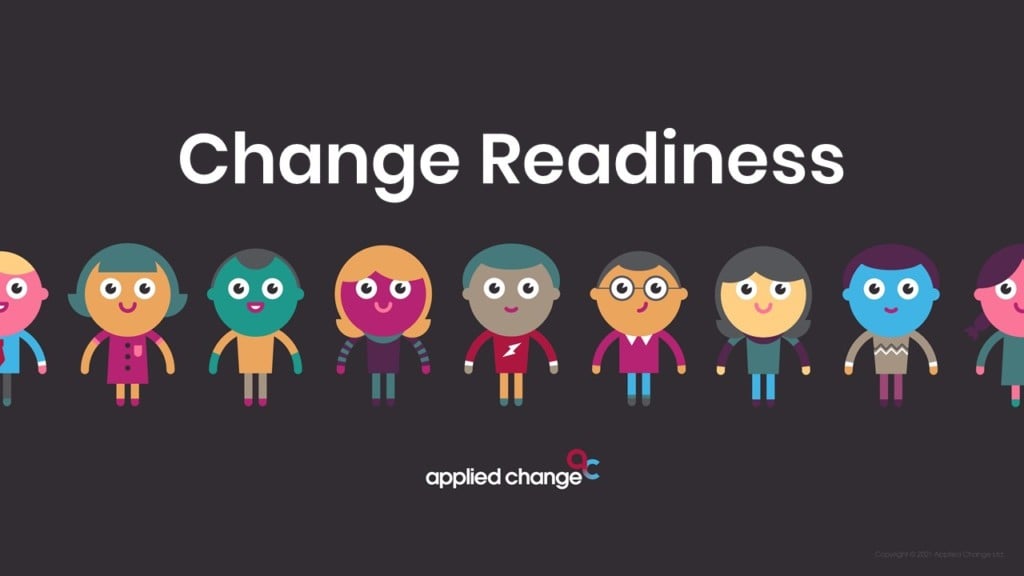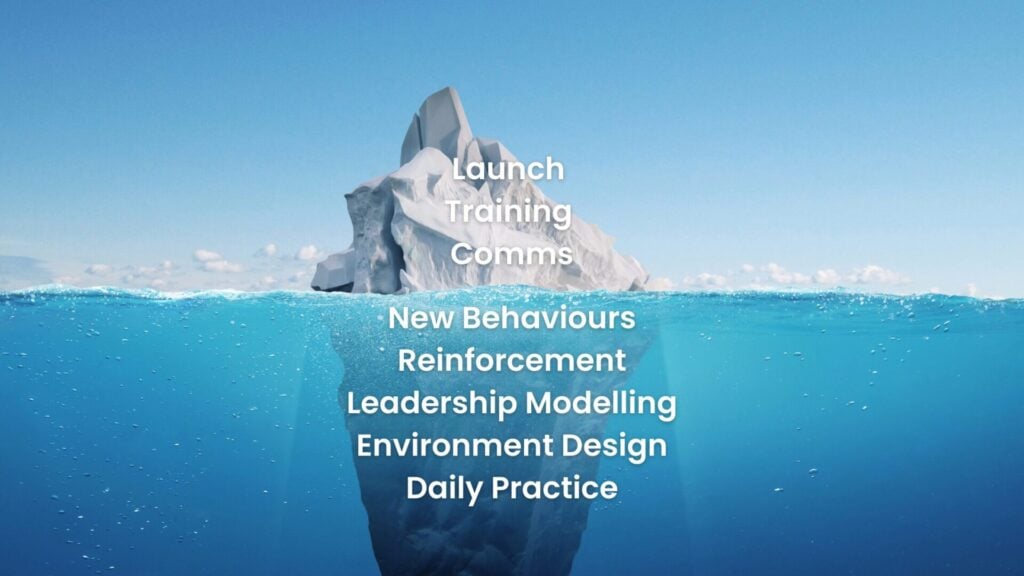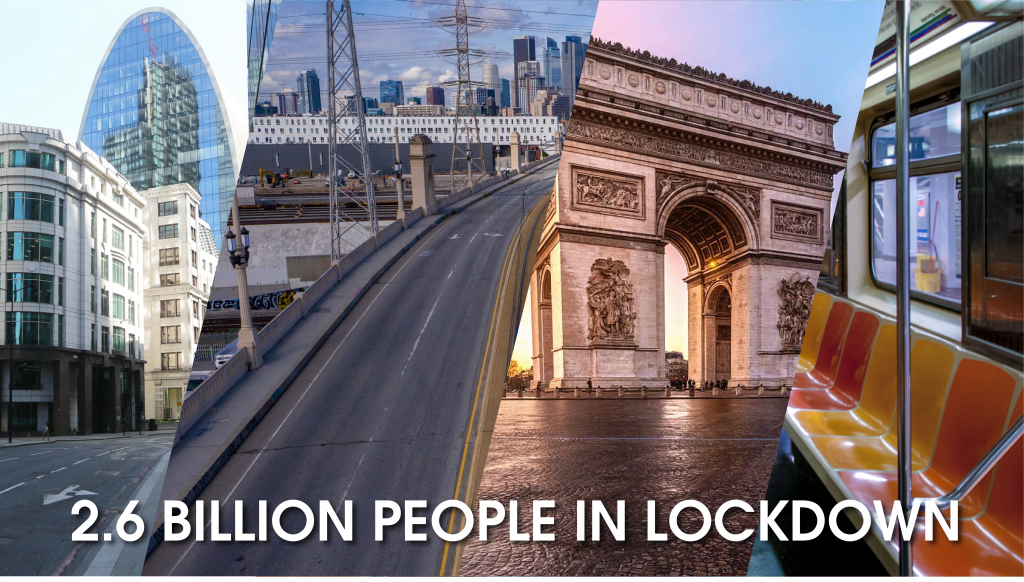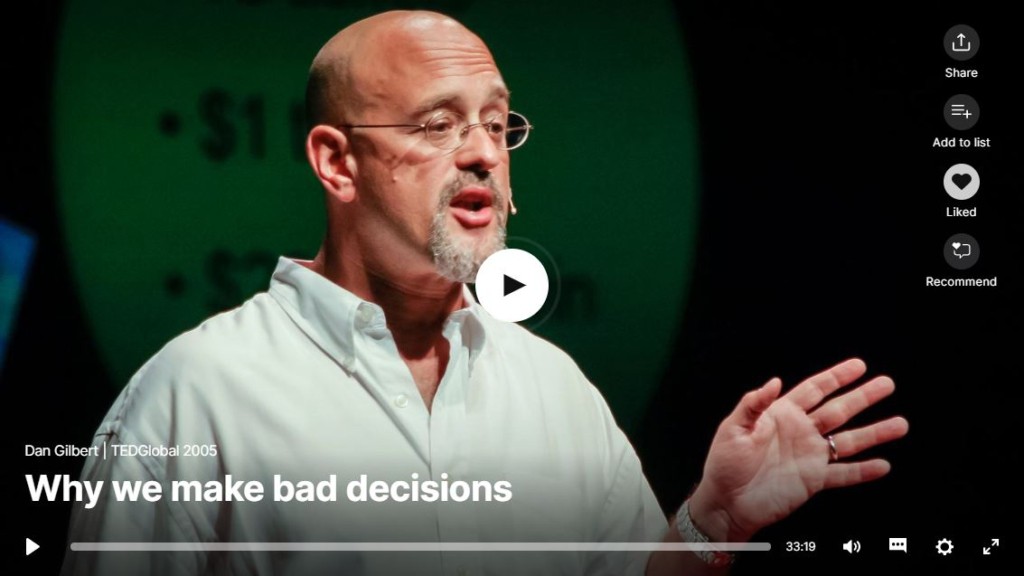What is Change Readiness? Start by asking these 5 questions
By Mark Vincent
Share

If you’ve ever tried making changes, whether big or small, you may have noticed that some go well and others are more challenging. In some cases they may end up being nothing more than a good intention that never happened. We’ve found through our many years helping clients with change is this holds true whether it’s something we’re trying to change about ourselves or changes we’re trying to make in the workplace (from new processes or IT systems to global transformations) the same principles are at play.
What we’ve also found is that the secret to success lies in taking an honest look at how ready we really are to make those changes. There is plenty of good science on behaviour change and, if the past 12 months has shown us anything, it’s that big change on a global scale is definitely achievable, see our “Lessons in Change” blog series. And yet we can also point to countless examples at home, in business or globally where there’s most definitely room for improvement, global sustainability and diversity being a couple of obvious examples.
As we’re learning more about the science of human behaviour in change situations, we’re seeing that common behavioural principles underpin them all, regardless of the topic or the scale. There are plenty of useful change models out there and it’s probably not surprising that, in their own way, they all tend to point in very similar directions. Through our work with clients, we’ve found that just asking 5 simple questions can already help to orientate the focus to a far more useful place.
Try them for yourself or, better still, with other team members or friends; each of you asking yourselves the following questions about a change that’s important to you:
1. How much do I really want it?
If you’ve ever tried to make changes in your life or at work, you may have noticed that sometimes you are full of energy and resolve the thing happens and at other times, what may seem like a great idea on paper just doesn’t get going at all. Of course we make lots of excuses about too much to do, not feeling in the right place, other people making it too difficult for us…and the list goes on. At work everyone may say they believe in the change and yet it’s hard to get them to engage or do anything meaningful to make the change happen.
This typically points towards insufficient motivation. Put simply we’re not emotionally invested in the change. We may think it looks like a good idea on paper, like losing a few pounds ready for the summer, but when it really comes to the sacrifices we have to make it’s just not important enough to us. At work, most of us are constantly juggling many priorities and making decisions every moment of every day about what we’ll put our attention to. If we’re not emotionally invested, believing completely in the purpose and feeling like everyone is pulling together, we’ll consciously or unconsciously let something else get in front. The result is of course that we don’t move it forward.
The answer to addressing this essentially comes down to simple choice: a) dig a little deeper on why we want this change in the first place and why it’s so important to us, the team, the business or humanity as a whole or b) pull the plug on the whole idea, focus on something else and stop wasting time worrying about it. That may sound harsh but you’d be amazed how much time is wasted by not really understanding that the choice is being made whether we’re aware of it or not.
Imagine a new exercise routine where 3 times a week you’re going to get up early and exercise before work. When the alarm goes off at 5:30 a.m. it’s dark outside and everyone else is asleep. It’s at that point you’ll find out just how motivated you are, especially a few weeks in.
2. What’s getting in the way or slowing me down?
With any change there will be barriers, in other words things that will either slow us down, distract us or knock us off course. Even when we’re feeling highly motivated to change, too many barriers, if not addressed will cause us to run out of steam, lose focus or become exhausted.
These barriers may be lifestyle, for example if giving up alcohol, our resolve will be tested when meeting friends in a pub, if adopting a strict vegan diet then restaurant food choices may be more limited. Other barriers may be our fear of the uncertainty of the change or the consequences if it doesn’t go as expected. We may have to give up something that turns out to be harder than expected.
With changes at work, these can include the possibility of job losses, bonuses that are impacted, lengthy or bureaucratic approval processes, lack of time due to conflicting priorities, local objectives, focusing on short term financial results, a culture of “things will never change”, toxic leaders, the list goes on. These obstacles will frustrate the change process and make it harder, they will use up valuable motivational energy, like leaving the handbrake on whilst trying to drive.
The point is that there will always be barriers and we won’t necessarily be able to remove all of them but taking time to at least mitigate the effect will help the change to move forward with greater ease. Think of it as clearing the path and making it a little easier for ourselves.
Following the exercise analogy, once we’re out of bed at 5:30am if we can’t find our kit in the dark, the dog has hidden our shoes and the bike has a flat tyre there’s a real chance that we’ll abandon the whole thing and go back to bed.
3. How can I make it feel more achievable?
If a change doesn’t actually feel achievable or it’s not clear what we need to do next there’s a good chance we’ll get caught up in our life or work activities and nothing will actually happen. We’re all busy and most of us are constantly using our mental energy to deal with what life throws at us. When making changes it’s important to think ahead about specifically how we’re going to achieve it and make it easier on ourselves juggle the different things that draw on our time and attention. We’d suggest at least the following:
1. Break the changes into manageable parts that can be done relatively easily and ideally within a few hours. This gives us a real sense of progress and achievement as we tick things off our list and move towards our goal.
2. Plan ahead and decide when we are actually going to do the things we have decided. By planning ahead I mean actually scheduling time for it in our diary. If we don’t actively make time for the tasks we need to do they will very likely end up as one of those things we didn’t get round to today. Most of us are all too familiar with that one! As Robin Sharma is often quoted as saying: “what get’s scheduled gets done”.
When making changes at work, the same principles apply. If we want a group of people to change something we need to work with them to break the changes down into something that they feel is achievable and we need to be equally clear on who is going to do each part and by when. Finally it’s critical that everyone makes time for it and sticks to it. When asking how a project became 6 months late, the answer is always one day at a time. In other words each day matters. When larger groups are working together it’s also important to be able to have visibility of progress, what’s outstanding, what decisions are needed and by whom. Project governance is the collective term used and, if done well, it’s very effective, when done badly though it can draw disproportionate amounts of time and actually slow progress down, so it’s important to get that balance right.
So, if we’re not achieving our goals or not getting there quickly enough then we need to really face into the reasons why and be honest about what’s stopping us doing what we have agreed is important.
With the exercise analogy, planning to do it on specific days of the week and preparing everything we need ahead of time can help greatly in reducing the chance that it won’t happen.
4. How can I sustain it longer-term?
If you are a regular gym member then you’ll have noticed how the car park is normally pretty full during the first few weeks of January. By the end of February things tend to revert back to normal. We come out of the Christmas excess period full of resolve and enthusiasm to become fitter and healthier and then we all too often fall back into our old habits and struggle to sustain it. Making the change in the first place is one thing, sustaining it over the long term is something else.
Behavioural specialists point out that apparently around 85% of what we do each day is habit driven. Habits are things we do without really thinking, they are an energy saving device for the brain, allowing it to focus on novel and complex tasks. Driving a car or brushing our teeth are obvious habitual examples, often we find ourselves doing them without being consciously aware of it. Habits can either be good for us or not and either way we’re likely to continue them unless we consciously form a different habit. That takes time and consistency; according to experts a new habit takes somewhere between 50 and 130 days to fully embed, depending upon the nature of it.
At work, you’ll see habits at play everywhere, whether it’s in ourselves, e.g. constantly distracting ourselves by checking emails or messages or at an organisation level where habitual behaviours exist between groups of people who’ve worked together for a long time. Culture in the workplace is, in essence, a collection of organisational habits and behaviours and as we know, they can be really tricky to change.
Whether the new habits are individual or cultural the approach is similar, be clear on what a good looks like and find ways to discourage the bad habits or behaviours and encourage or reward the desired new ones so it becomes easier and more desirable to do the right thing. Consistency is really important here too in order to ensure that we don’t slip back into our old ways.
One last thing on making changes stick, it takes time to adjust. With any substantial change it can feel uncomfortable for a while and things may take a little longer or slow down for a while till we get used to them so it’s important to allow time for that to happen.
Following the exercise analogy, I’ve noticed throughout my life is that the more regular I am with exercise, the more I feel I want to do it. I actually miss it when I can’t make a session for some reason. On the flip side, if I don’t exercise for a while, it can take a herculean effort to get back on it again. The more we do the more we want to do and the less we do the less we want to do.
5. What am I learning and how could I use that to adapt my approach?
As the saying goes it’s very easy to keep doing the same thing over and over and expecting a different result. It’s important to regularly reflect honestly about how the change is going, what’s working and what could be improved. We regularly hear from clients going through a big change that they’ve “done the communications” as if it’s about ticking a box. Great that a communication has gone out but how did it land with everyone? Are there any concerns? Are we seeing some behaviours that we weren’t expecting or that aren’t useful to what we’re trying to achieve? How could we change that?
It’s also easy to fall into the trap of assuming that things will stay as they are. If the recent past has shown us anything, it’s that the world changes very quickly and so we need to ensure that the change we’re making is still as relevant as it was when we started. Has anything changed that means we should change our approach to the change we’re making? Should we abandon it altogether? Many business changes have suffered from not knowing when to pull the plug, hence throwing good money after bad towards something that has either marginal value or none at all.
On the other hand, we’ve seen a string of examples of big name brands that have done the opposite, they have not followed the learn and adapt cycle quickly enough to respond to what’s happening around them and have paid the ultimate price. Adaptability is a core human quality and has served us well for many thousands of years but only if we allow ourselves the time to assess and reflect honestly and without undue bias then act decisively on what we’ve learnt.
That’s as true within a large team as it is with our new exercise regime. If we are to hit our fitness goals that we’ve set ourselves then we need to periodically step back and reflect honestly about what’s working and what’s not going so well and therefore where we could improve.
Regardless of the nature and scale of the change we’re trying to make, we’ve found that simply asking ourselves these 5 questions can immediately get us to a more useful place in understanding how ready we are to change and, importantly, what we could do to increase our chance of achieving the outcomes that matter to us. We hope you find them useful too and we’d love to hear your thoughts and feedback.
Alternatively, if you’re about to start making a change at work, or in the middle of one, give one of our free readiness assessments a try.
Get in touch
If you’re not achieving your goals or want get more done in your business, we can help.
Whether it’s supporting you, growing your leadership team or directly helping you to make something happen, contact us on (+44) 0800 612 3548 or click the button below.
Alternatively sign up below to be the first to know about our events and receive free resources and insider tips.
Related content
Embedding Change: Why Habits Matter More Than Announcements
Most change efforts fail not because of poor planning, but because old habits resurface after launch. Discover why behaviour change is the key to lasting transformation — and how to embed new habits that actually stick.
The Secret to Reducing Change Resistance and Fatigue in Your Organisation
Facing a blend of change resistance and fatigue, Claire’s story highlights the real-world challenges leaders face in evolving business landscapes. What causes change resistance and change fatigue and how are they linked? Learn practical solutions to reduce them and drive successful change in your organisation.
Are we good at change?
In a matter of weeks at least 2.6 billion people have changed their way of life in ways that would have previously been unimaginable. Given the speed and scale of this change, what can we learn from it and how can we apply that learning to other changes that matter to us?
How to make life changes and stick to them
Why do we struggle so much to turn our good intentions into sustained life changes? What can we do to make those important changes stick?
Dan Gilbert – Why we make bad decisions
We go through life thinking we’re acting logically and based on the information presented to us. In this funny TED talk Dan Gilbert shows us just how easily our judgement is distorted and that leads us to making decisions sometimes that are not as good as we think they are.






